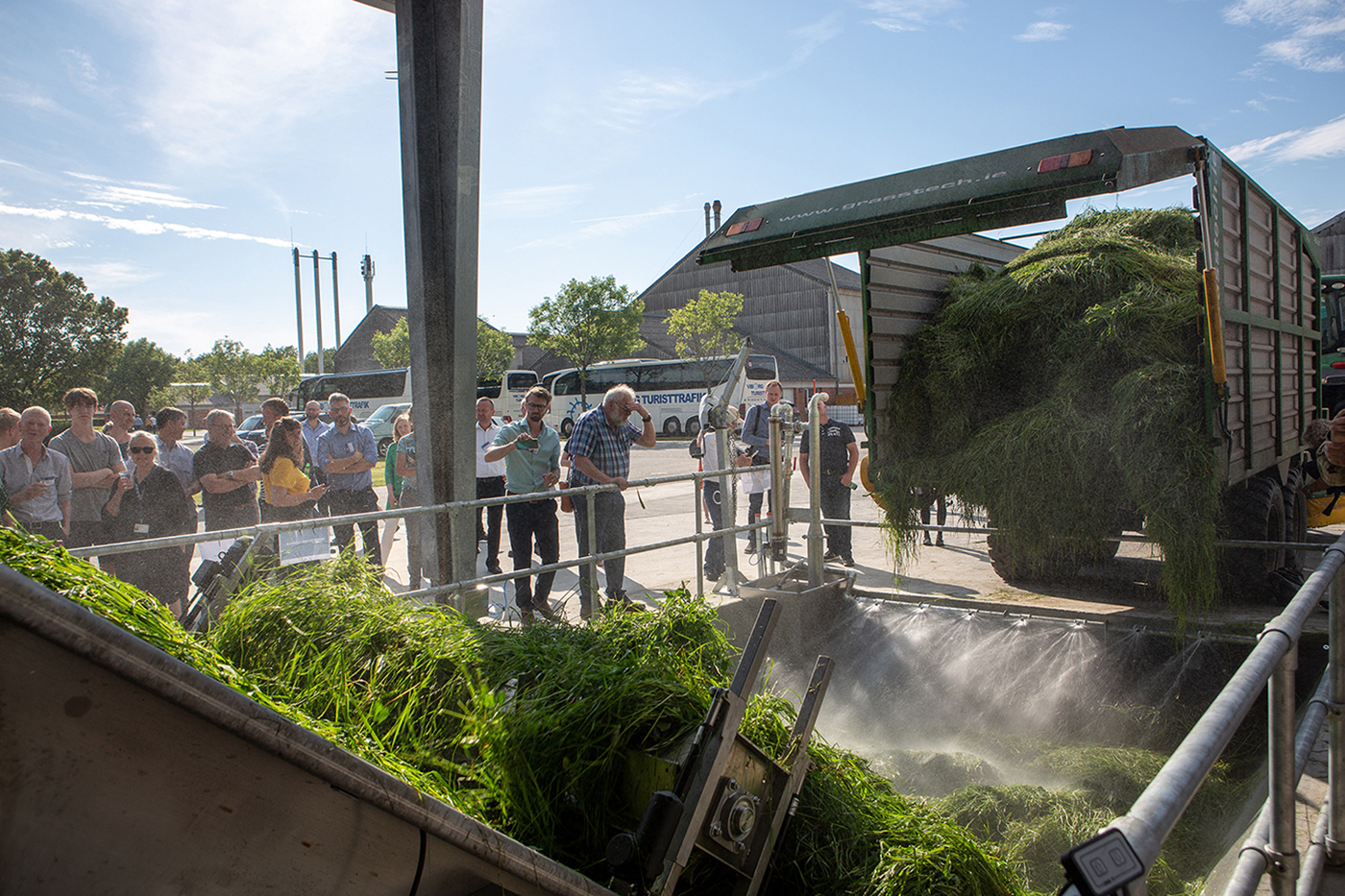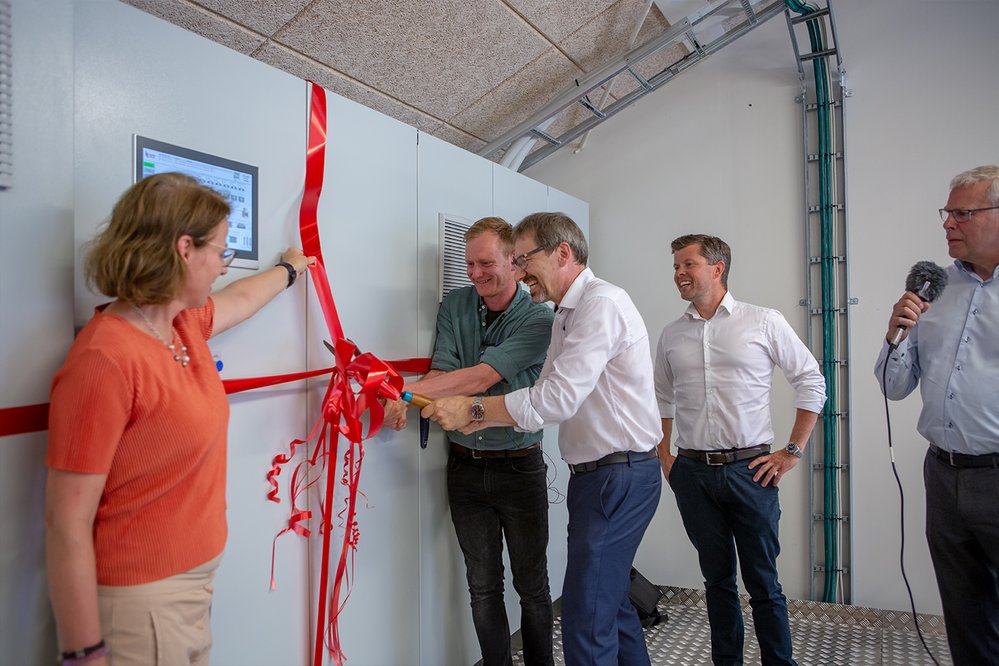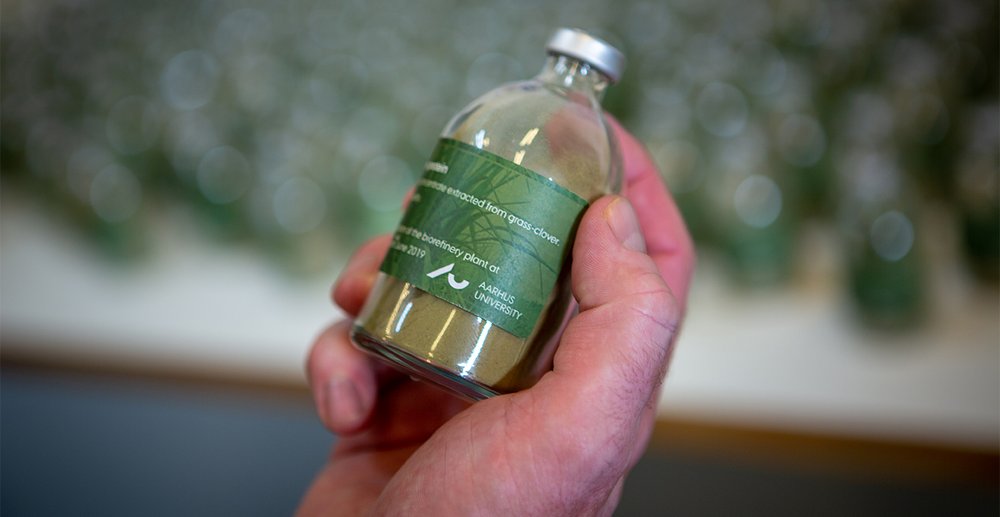New biorefinery is an important step in the transition to more environmentally and climate friendly agriculture
A new DKK 15 million biorefinery facility will make agriculture greener through the cultivation of grass instead of cereals. The many benefits to be gained from farming grass include fewer emissions of greenhouse gases to the atmosphere and less leaching of nitrogen into the aquatic environment. Another important benefit is that grass is a new form of protein.

Both the climate and the environment will benefit from farmers cultivating grass instead of cereals. Trials at AU Foulum have shown that replacing cereal crops with permanent grassland leads to fewer greenhouse gas emissions and less leaching of nitrogen into the aquatic environment. Unlike cereal cultivation, grass cultivation does not require the use of pesticides and it helps build soil tilth.
Grass cultivation has many benefits, but what are the uses of grass?
Green protein
Research at Aarhus University in Foulum has previously shown that protein extracted from green biomass can be used as protein feed for pigs and poultry. If the protein is further refined, it can be used as a food ingredient. Furthermore, there are residual products which can be used for cattle feed, bioenergy, and as a basis for the production of chemicals and other products.
However, before researchers can recommend establishing biorefinery facilities, they need more knowledge about how to design a full-scale biorefinery facility and about the costs associated with production.
(Article continues below the picture)

Assistant Professor Morten Ambye-Jensen (in the middle) officially opens the new biorefinery facility together with Ejnar Schultz, managing director, SEGES. Silke Boger, European Commision, DG Agriculture and Rural Development, is holding the ribbon. Photo: Agro Business Park A/S.
Demonstration facility at AU Foulum
So far, research has taken place in laboratories and at a small-scale experimental facility. However, in 2018, a number of agricultural companies and foundations donated funds to build a biorefinery facility at AU Foulum.
The new facility will make it possible to work with process optimisation and technology integration of biorefinery processes at an industrially relevant scale,” says Assistant Professor Morten Ambye-Jensen from the Department of Engineering, who heads the research in the field.
International attention
The new facility is a step towards creating opportunities for greener agriculture and food production. In 2017, Aarhus University established a Centre for Circular Bioeconomy (CBIO), and last week the centre hosted an international conference attended by around 250 participants at AU Foulum. At the inauguration of the new facility, several conference participants had much praise for the establishment of the new facility.
Silke Boger from the European Commission pointed out that, for many reasons, there is a great need to increase European production of plant protein. The EU is a major importer of soy protein, and this import is not always considered sustainable. Furthermore, as mentioned above, increased cultivation of protein crops will contribute to more sustainable farming practices.
Ejnar Schultz from Seges and Jesper Pagh from DLG both pointed out that the new facility will be able to meet both climate and environmental targets in the agricultural sector. At the same time, it is expected that production of grass protein could become an attractive future business area for Danish agriculture.
(Article continues below the picture)

The guests were given a small bottle of green protein from the facility as a souvenir. However, the green protein is ‘only’ feed quality and therefore not suitable for human consumption. Photo: Agro Business Park A/S
Facts about the new biorefinery facility
The cost of establishing the new facility was approx. DKK 15 million. The establishment was made possible with funding from various foundations and businesses, including Arla, Danish Crown, DLG, DLF, GUDP, Central Denmark Region and Aarhus University.
The new facility will be able to process 10 tonnes of fresh biomass per hour. The facility will be producing, e.g. protein for feed experiments with pigs and poultry.
When the protein has been pressed from the grass, the remaining press cake can be used for cattle feed. Studies have shown that cows produce more milk when they eat the press cake compared to when they eat unpressed grass.
The residual product known as 'brown juice' can be used in biogas production or as the basis for production of various high-value products.
Further information
Assistant Professor Morten Ambye-Jensen
Department of Engineering, Aarhus University
Email:maj@eng.au.dk
Mobile: + 45 9350 8009
